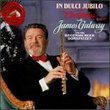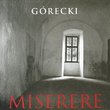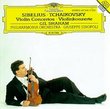| All Artists: Wolfgang Amadeus Mozart, Marc Minkowski, Les Musiciens du Louvre Title: Mozart: Symphonies Nos. 40 & 41 Jupiter Members Wishing: 0 Total Copies: 0 Label: Archiv Produktion Original Release Date: 1/1/2006 Re-Release Date: 7/4/2006 Genre: Classical Styles: Opera & Classical Vocal, Historical Periods, Classical (c.1770-1830), Symphonies Number of Discs: 1 SwapaCD Credits: 1 UPC: 028947757986 |
Search - Wolfgang Amadeus Mozart, Marc Minkowski, Les Musiciens du Louvre :: Mozart: Symphonies Nos. 40 & 41 Jupiter
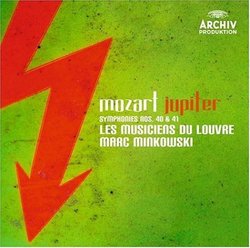 | Wolfgang Amadeus Mozart, Marc Minkowski, Les Musiciens du Louvre Mozart: Symphonies Nos. 40 & 41 Jupiter Genre: Classical
This is a mixed bag. On the one hand, Mozarteans will admire how swiftly, cleanly, and transparently these works are played, and how fiercely Minkowski has his Musiciens du Louvre attack the beat, bringing out a potent rhy... more » |
Larger Image |
CD DetailsSynopsis
Amazon.com This is a mixed bag. On the one hand, Mozarteans will admire how swiftly, cleanly, and transparently these works are played, and how fiercely Minkowski has his Musiciens du Louvre attack the beat, bringing out a potent rhythmic thrust in Mozart's last two symphonies. The Jupiter has whopping good moments, with period kettledrums thwacking away, winds piercing and sharply played, and celli and double basses being bowed with real zeal. But it somehow lacks the urgency and grandeur most conductors find in it. The 40th Symphony, the G minor, seems weak and underplayed despite the "swing" Minkowski brings to it. The first movement in particular is too feathery and not nearly dark enough; it's practically merry. The Ballet Music to Idomeneo, heard outside the already long opera it belongs to, is very effective, and handsomely played. In short, a new look at the symphonies that may please some but may seem like studies for more imposing readings. --Robert Levine Similar CDs
Similarly Requested CDs
|
CD ReviewsAuthenticity with an expressive flair--a winner Santa Fe Listener | Santa Fe, NM USA | 07/04/2006 (5 out of 5 stars) "The period-style movement is mature after two decades in the limelight, and we're now seeing the advent of less dry and academic music-making in favor of emotion, expression, and warmth. That's certainly ture of Maarc Minkowski's readings of Mozart's last two symphonies. For the sake of authenticity we get less vibrato, smaller forces, and often very fleet tempos--the first movement of Sym. 40 is pretty breathtaking. Including all repeats, the G minor takes around 27 min., which cuts 3-5 min. from each movement by conventional standards. We're very far from the romantic Mozart of Furtwangler, yet "romantic" means expressive, and since Minkowski is quite lyrical, even dreamy in the slow movement, he has absorbed the best of romanticism. He prefers soft contours instead of sharp angles, and the strings don't zing and scrrech. Nor is anything rushed or hectic. In all, this is a very fine period-style Sym. 40, challenging the best. Sym. 41 is given the same musical love and care, but before it arrives we get the ballet music from Idomeneo, and here the Musiciens de Lourvre really shine with their perfect phrasing and sweet tone. This one item dispels any notions that period bands must sound scrawny and sour. As for the Jupiter, with all repeats it's 10 min. longer than the G minor. I was impressed with the martial tone Monkowski sets; suddenly the opening bars are almost a march into battle. The lyrical second theme sounds even sweeter by contrast. The slow movement, surprisingly, is taken as slow as in conventional performances. The Minuet, as in Sym. 40, is conducted one beat to a bar, and the clipped martial accents reappear. I expected a breathless finale, but foreseeing the complex fugal writing to come, Monkowski doesn't rush in, and as a result his reading makes Mozart's interwoven threads each stand out clearly (with only a bit of jumble--the tempo is still quite fast by any standard). In sum, a period-style recording that gave me more pleasure than I ever expected. " Authentic and definitive period performances Daniel R. Greenfield | Milwaukee, Wisconsin, United States | 12/14/2006 (5 out of 5 stars) "Unbelievable, but true: These two symphonies, together with the enchanting no. 39, were written in a mere six weeks during the summer of 1788 while Mozart (aged 32) was residing in a suburb of Vienna. As the album notes by Cliff Eason relate, there has evolved a certain mythology surrounding these works: First, that they were composed out of some deep inner compulsion in the pursuit of a high abstract musical Idea; second, that Mozart had withdrawn from Viennese musical society at this point and that as a result these works were never performed during his short lifetime. In fact, they were most likely written for a series of subscription concerts that Mozart had arranged for the summer or fall of that year, in order to earn some extra money. The evidence for this is that a score of the G-minor exists with the composer's hand-written corrections: clarinets are added into the first movement in place of the oboes of the original version. This leads one to believe that Mozart probably did hear the works performed, and may even have conducted them himself.
According to Eisen, the symphonies were almost instant classics, especially the G-minor, which was viewed as romantically revolutionary, with its tragic, unremittingly intense finale "which continues in the minor key right up to the final chord" (Eisen). It was quickly hailed as a true masterpiece. Eisen also traces the origin of the term `Jupiter' applied to the C-major symphony. He traces the provenance to England, where it was apparently first used by Johann Peter Salomon. But the nickname also appears to have been in use before 1820, for it also appears in a program for the Edinburgh Music Festival in 1819. Every lover of classical music is of course familiar with these two symphonies, and has an opinion on how they "should" sound, as attested by Robert Levine's brief review elsewhere on this page. A reasonable and compelling argument is that they are best performed using period instruments, so the sound is faithful to what Mozart heard. Once you accept that proposition, it then becomes a question of tempos. Once again, it seems reasonable to conclude that faster, fleeter tempos overall were originally deployed -- and that is exactly what Minkowski delivers here. The G-minor symphony is performed very fast, but not sloppily: every note is in place. The second version of the score is used, as one can clearly hear the clarinets in the first movement. The tragic element of the work is underscored by eliminating any trace of rubato; it is all performed without flexibility and without emotion, perfectly straight-faced, to underscore the tragic. Robert Levine's comment that it sounds 'merry' is hilarious. Of course the sound is indeed lighter compared to a modern orchestral performance like Bohm's. The question is: Which sound is more authentic? Same with the C-major: Levine's comment that it 'lacks grandeur' is probably correct -- if you compare this account with that of a modern orchestral version. To my mind, there is sufficient grandeur, but maybe not as compared to a modern orchestral reading. But again the same question as before must be asked. This period performace has very swift tempos, with very tight, crisp playing by the orchestra. Only at the very end of the glorious fugue of the fourth movement does Minkowski press for a ritardando, as the tympanist thunders out the awe-inspiring climactic ending. I would be remiss not to mention the ballet music to Idomeneo which is inserted ingeniously between the two great symphonies: It is performed brilliantly, and assures this album of its worthiness for any classical music lover. " |

 Track Listings (9) - Disc #1
Track Listings (9) - Disc #1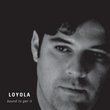

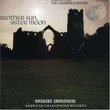




![Across The Universe [Deluxe Edition]](https://nationalbookswap.com/cd//m/51/1251/1241251.jpg)
